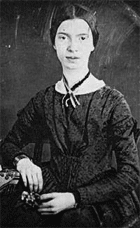Lost in Themselves
The Tate Modern Museum (home of "The Oak Tree") recently exhibited the work of 1950s American Modern artist Philip Lorca diCorcia. Please read the excerpts below, browse the photographs on the website I've included, and respond to the questions that follow.
"For the Streetwork series, diCorcia developed a technique to photograph passers-by unawares. He set up an unobtrusive system of lights that could be activated by radio-signal. When a suitable subject walked past, diCorcia could take a candid snapshot whose elaborate lighting (in the artist’s words) adds ‘a cinematic gloss to a commonplace event’. The resulting photographs project a sense of the solitude and introspection within the bustle of the city.
"DiCorcia has commented:‘the street does not induce people to shed their self-awareness. They seem to withdraw into themselves. They become less aware of their surroundings, seemingly lost in themselves.’"
Explore the four photographs at: http://www.noorderlicht.com/eng/fest99/wonder/corcia/ph1.html
Why do you think diCorcia found these particular subjects "suitable" for his purpose? You can pick one or two, or discuss them as a single subject.
How can you relate this exhibit to the Hemingway's "The Short, Happy Life of Francis Macomber?"
"For the Streetwork series, diCorcia developed a technique to photograph passers-by unawares. He set up an unobtrusive system of lights that could be activated by radio-signal. When a suitable subject walked past, diCorcia could take a candid snapshot whose elaborate lighting (in the artist’s words) adds ‘a cinematic gloss to a commonplace event’. The resulting photographs project a sense of the solitude and introspection within the bustle of the city.
"DiCorcia has commented:‘the street does not induce people to shed their self-awareness. They seem to withdraw into themselves. They become less aware of their surroundings, seemingly lost in themselves.’"
Explore the four photographs at: http://www.noorderlicht.com/eng/fest99/wonder/corcia/ph1.html
Why do you think diCorcia found these particular subjects "suitable" for his purpose? You can pick one or two, or discuss them as a single subject.
How can you relate this exhibit to the Hemingway's "The Short, Happy Life of Francis Macomber?"

